
Thessaloniki is indisputably number one when it comes to Greek sweets. Tsoureki, Bougatsa, Trigona Panoramatos and Syropiasta are the most famous of the northern city’s delectable sweet treats.
Thessaloniki: Sweet Geographic Crossroads
Legendary old pastry shops and famous desserts are a product of historical geography in Thessaloniki, which has been a crossroads between East and West for more than a millennium. The result is a cross-culture mix and-match of peacefully coexisting ethnicities and religious sects.
Ten of Thessaloniki’s most renowned delicious delights include Bougatsa, Trigono Panoramatos, Tsourekia, Baklava, Galaktoboureko, Ekmek, Rizogalo, Kazan dipi, Kunefe, Mille-feuille, Profiterol, Tavuk gogsu and Tulumba.
Diane Kochilas, the Greek-American chef and television host, combines gastronomy, travel and food history for worldwide audiences. When it comes to Thessaloniki sweets she states: “Cosmopolitan Thessaloniki is also known admiringly by its locals as the sweet mother, thanks to its longstanding pastry tradition. Almost everywhere you turn, there is a shop selling syropiasta in every shape and size; some of Greece’s leading pastry dynasties hail from Thessaloniki.”
To appreciate the popularity of these adopted sweet delights, a look back at the city’s history is required.
Long defined by the number “2,” Thessaloniki, which was the second largest city in the Byzantine Empire and the second busiest port in the Ottoman Empire, is currently the second largest city in Greece. For centuries, its importance and wealth have derived from its location in the far northeastern corner of the Thermaic Gulf of the Aegean Sea.
As a result, Thessaloniki served as an important hub of trade for the Empire and a tempting target for the growing Ottoman powers. In 1430 the Ottoman Sultan Murad II conquered and sacked the wealthy Byzantine city.
Ottoman Muslims Populated Thessaloniki
The victory had a profound effect on the population. Murad enslaved one fifth of Thessaloniki’s citizens while a large number of the Greeks simply fled. In the wake of this conquest, Ottoman Muslims flocked to the city, joining those who had remained behind.
Sixty years after Thessaloniki came under Ottoman rule, its population changed again. This was credited to the official policy of Spain under Ferdinand II and Isabella. In 1492 the Catholic monarchs ordered the expulsion of all Jews from their territories of Castile and Aragon.
Ottoman Sultan Bayezid II, invited the expelled Jews to move to his lands, telling his courtiers: “You venture to call Ferdinand a wise ruler, he who has impoverished his own country and enriched mine.”
Sephardic Jews Enriched Culture, Sweets of Thessaloniki
Many of the Spanish Jews who flooded into Thessaloniki were well-educated merchants with a wide network of trading connections. The Sephardic Jews of the Benveniste family proved to be exceptionally civic-minded. They used their wealth over the next few centuries to establish libraries, and later public parks, to benefit their new city.
Within less than two hundred years, Thessaloniki had been transformed from a Byzantine, Eastern Orthodox, Greek-speaking city into a multi-ethnic, multi-religious, multilingual urban port.
Visitors marveled at the colorful chaos of the place, listing the languages spoken in the city: Greek, Turkish, Albanian, Bulgarian, Vlach, French, Italian, Russian, and Arabic. The Sephardic Jewish population preserved and spoke a sixteenth-century dialect of Spanish called Ladino while the Ashkenazi Jews spoke German, Polish, and Russian.
Although the Ottoman administration welcomed all comers to the city, they did not, in fact, treat or view them all as equals. Non-Muslims were allowed to pursue their own faiths in peace but they were decidedly second-class citizens within the Empire.
This mingling of ethnicities, religions, and languages was romanticized. Tensions between the populations rose and ebbed over time. By the end of the 18th century, with concern over its shrinking physical borders and uneasy about its future, the Ottoman Empire undertook reforms, known as the Tanzimat, or reorganization.
These reforms included the establishment of schools and universities, the reform of commerce and trade, and the construction of railway networks, as well as full legal equality for Ottoman citizens regardless of their religion.
By 1912 the Greek army liberated Thessaloniki from Ottoman rule and a slow, steady exodus of Bulgarian, Jewish, and Muslim citizens transformed Thessaloniki once more.
After the tragic Great Fire of 1917, which left 70,000 people homeless — most of them Jews — the Greek authorities reimagined the city. They introduced wide boulevards, large squares and broad streets to the once-cramped city.
In the population exchange of 1922 with Turkey, a considerable portion of Thessaloniki’s Muslim population departed to Turkey. At the same time, a significant influx of Asia Minor and Pontic Greeks were forced to settle in an unfamiliar country.
The makeup of the population changed yet once more with the onset of World War II as members of the Jewish Community were put on trains to concentration camps, with the vast majority of them never to return.
Many contemporary writers have written about the city’s rich history, including Victoria Hislop with her book “The Thread.” Hislop was recently awarded honorary Greek Citizenship for her services to the Greek nation. In this work, she tells the story of two Sephardic Jewish families whose lives cross and intertwine by historical accident.
The 10 Most Popular Thessaloniki Sweets
Bougatsa

Bougatsa, Greek custard pie with filo dough, is a traditional Greek dessert. It is made with the most creamy custard wrapped in golden brown crisp filo, sprinkled with melted butter and garnished with powdered sugar and cinnamon.
Trigono Panoramatos
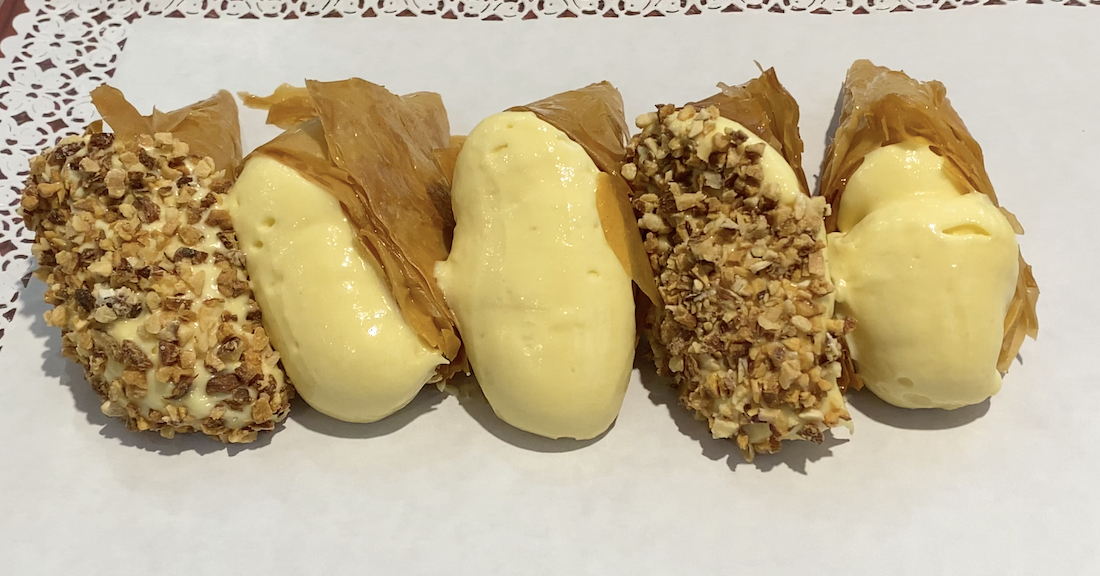
According to locals, the Elenidis Bakery created this sweet treat. It consists of crisp filo dough filled with a cream or custard and is particular to the area in Thessaloniki known as Panorama.
Tsoureki

Tsoureki is a sweet bread made with flour, milk, butter and sugar and commonly seasoned with orange zest or mastic resin. Most commonly seen at Eastertime, it is a perennial favorite.
Baklava
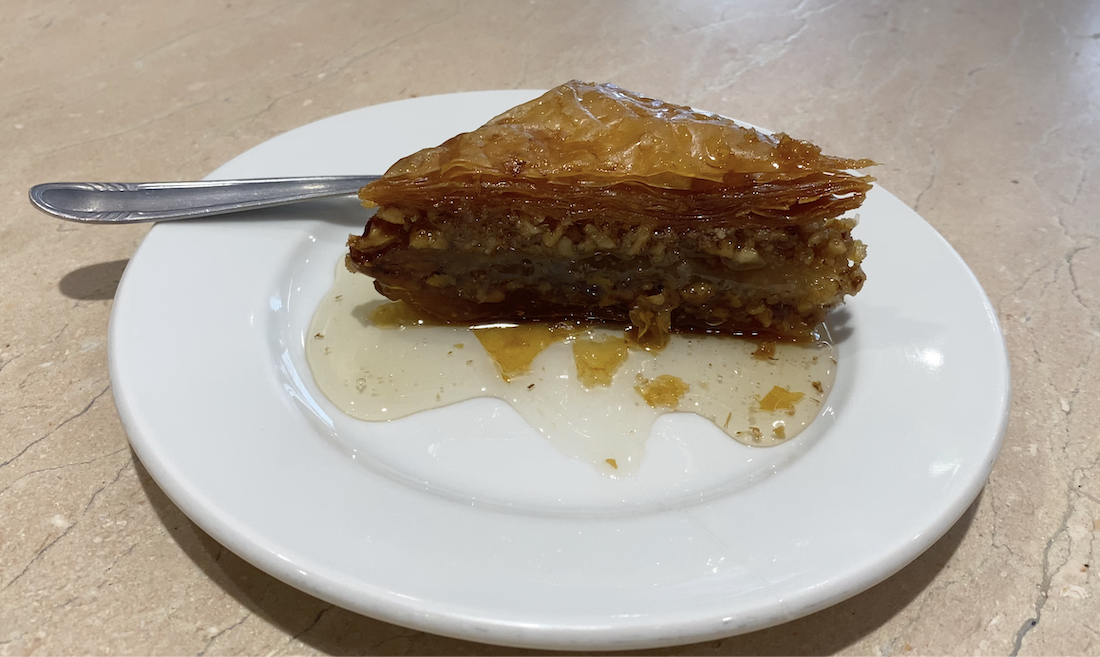
Baklava is a layered pastry dessert made of filo pastry, filled with chopped nuts, and sweetened with syrup or honey. It was one of the most popular sweet pastries of Ottoman cuisine. No doubt it arrived in Thessaloniki in the 15th century when Ottomans took over the city.
Galaktoboureko

This dessert is made up of layers of filo above and below, filled with a custard, cut into square portions, or rolled into individual servings and smothered in a clear, sweet syrup. The custard may be flavored with lemon, orange, or rose water.
Ekmek
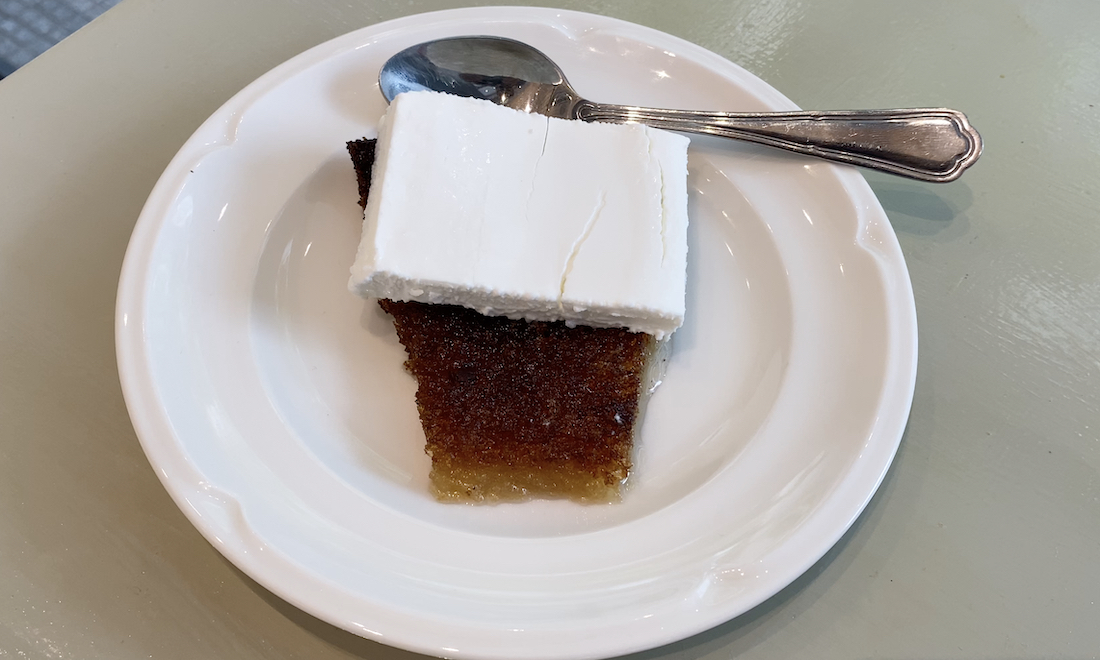
Ekmek Kataifi is a bread pudding soaked in syrup and topped with Kaimaki, a sweetened clotted cream. It consists of a kataifi pastry on the bottom, a semolina cream center and a topping of whipped cream. Toasted almonds or chopped pistachios usually garnish the sweet.
Rizogalo
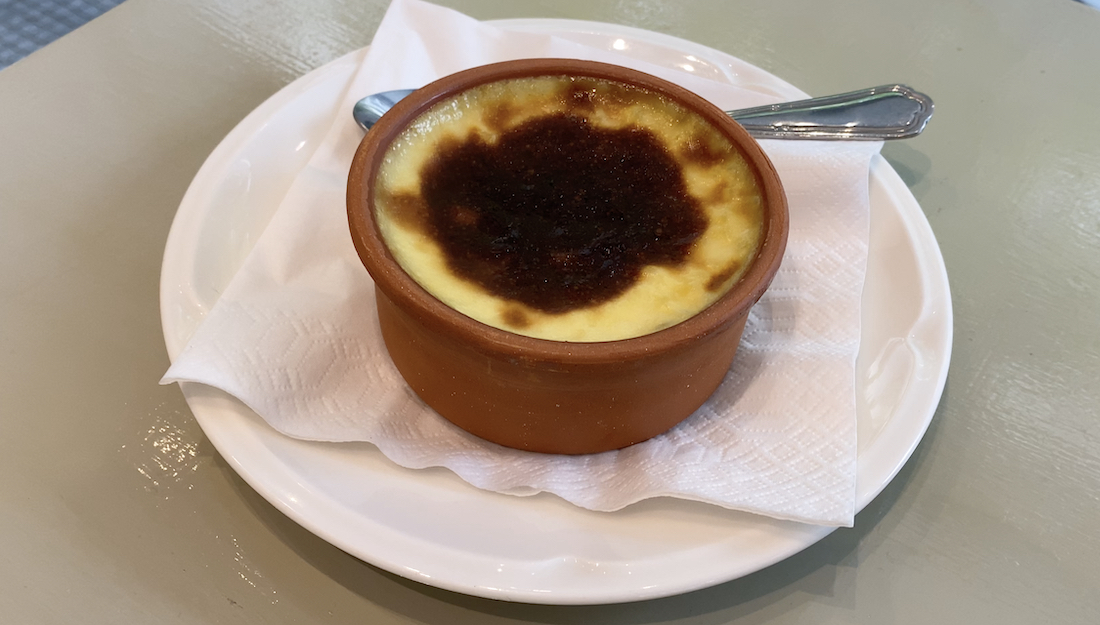
Rizogalo, or Rice Pudding, is a dish made from rice mixed with water or milk and other ingredients such as cinnamon, vanilla and raisins.
Kaza dibi
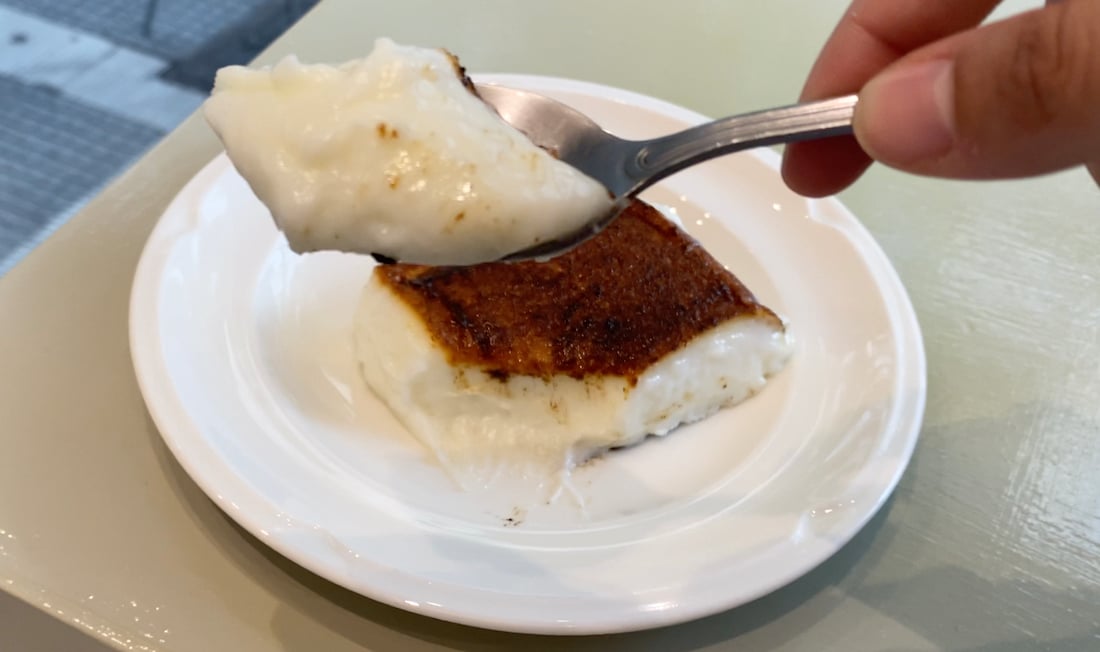
This rosewater cream has that wonderful flavor of burned sugar. Its name translates to “bottom of the pan.” The burned caramel delight has been equated as the Eastern version of Creme Brûlée, as it is found in Turkey and Greece.
Kunefe
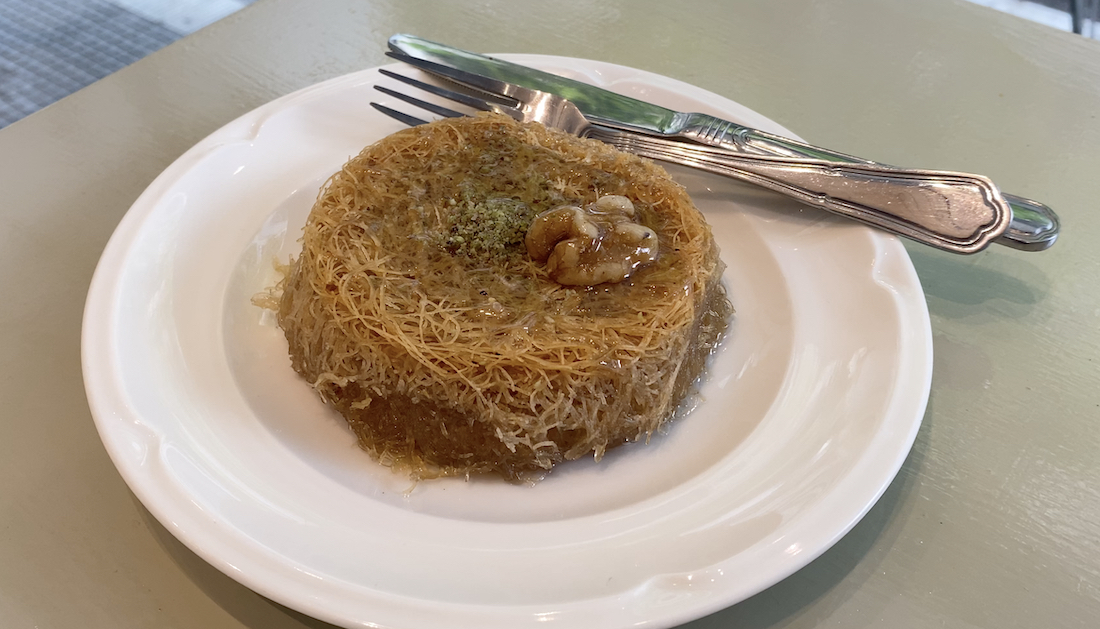
Kunefe is made with shredded filo pastry, or fine semolina dough, soaked in sweet, sugar-based syrup.
It is layered with cheese, or with other ingredients such as cream or nuts. This syrupy sweet is considered Middle Eastern in origin.
Mille-feuille

Mille-feuille is made up of three layers of puff pastry filled with pastry cream. Its a traditional French sweet with an unknown origin story, but it is a favorite in Greece’s northern metropolis.
As refugees from Asia Minor in the early 20s, the Konstandinidis family made this pastry their pride and joy.
Profiteroles
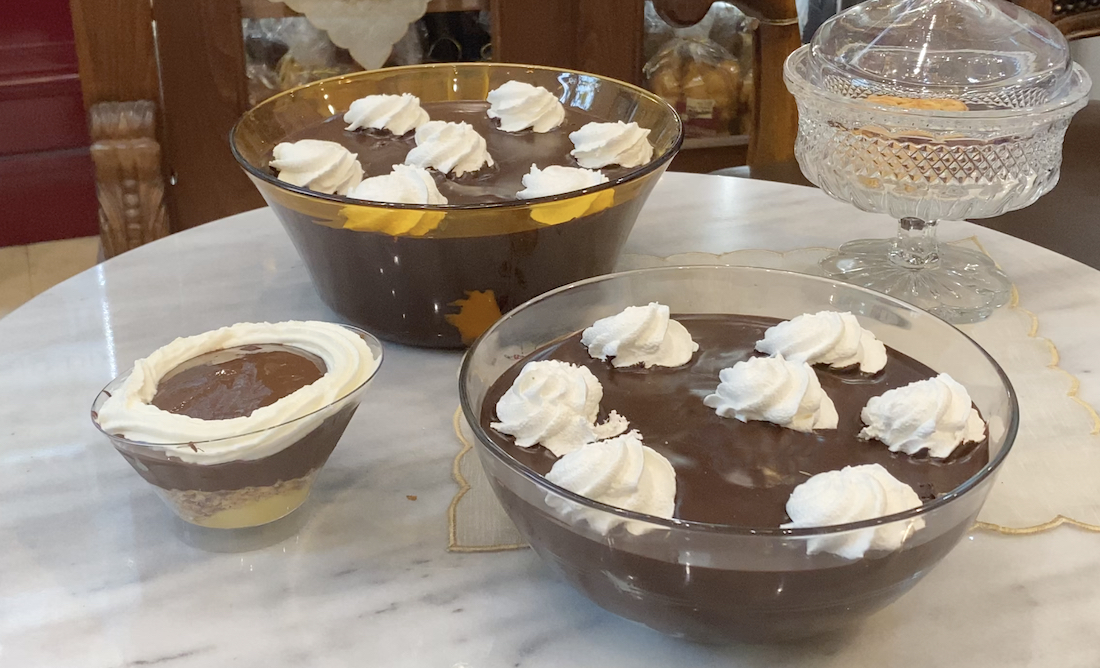
Profiteroles are a small ball of soft, sweet choux pastry filled with cream and covered with chocolate sauce.
Tavuk gogsu
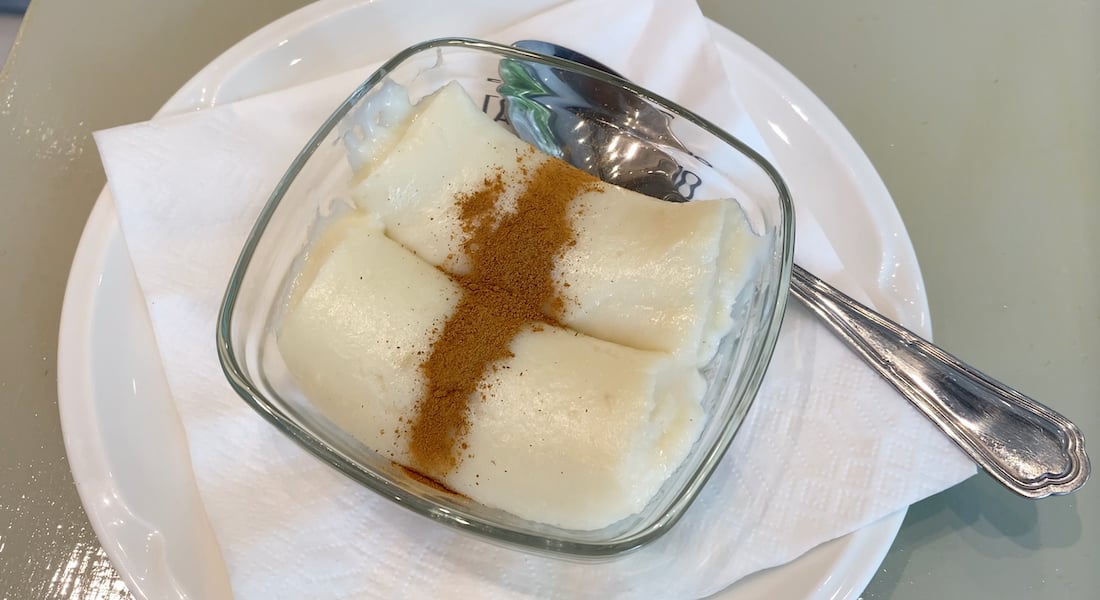
Tavuk gogsu was considered a dessert for the Ottoman aristocracy. Tavuk gogsu literally translates to chicken breast and that is what is used in the preparation of this pastry! The chicken breast is boiled and then flattened into a very thin layer and combined with a sweet, caramelized cream.
Tulumba
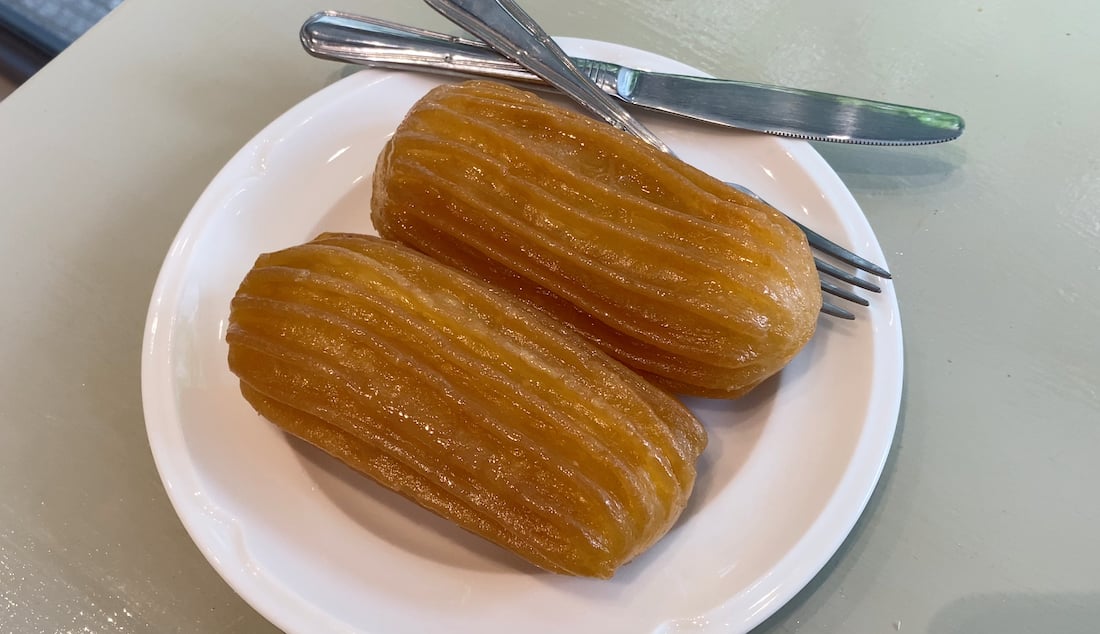
Tulumba is a fried batter soaked in syrup. It is first deep-fried to a golden color and then sugar-based syrup is poured over it when still hot. It is eaten cold. It is a traditional dish of Ottoman cuisine. Its name originates from the Arabic word for pump.
See all the latest news from Greece and the world at Greekreporter.com. Contact our newsroom to report an update or send your story, photos and videos. Follow GR on Google News and subscribe here to our daily email!



